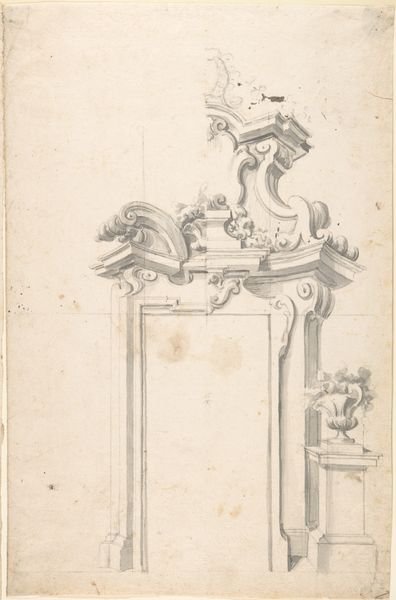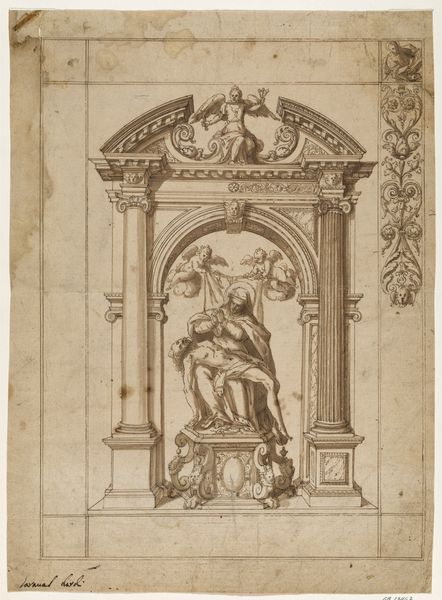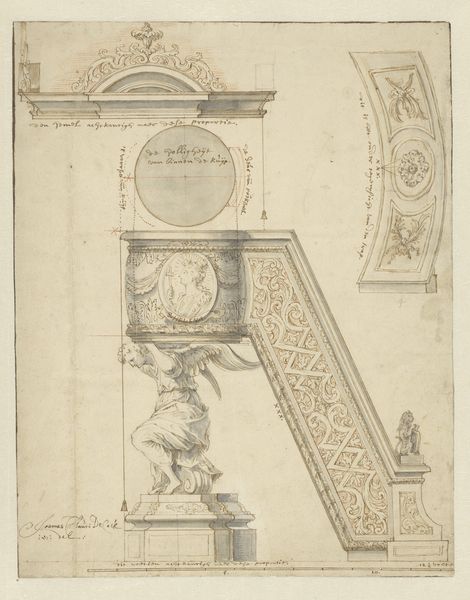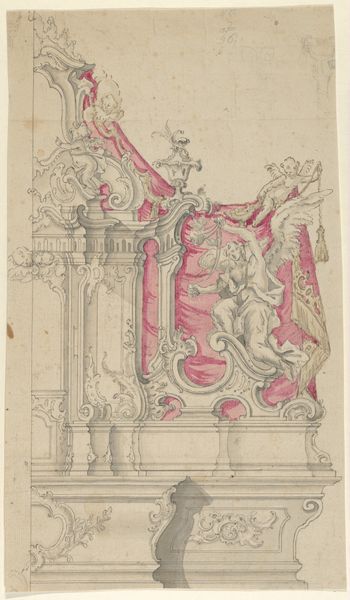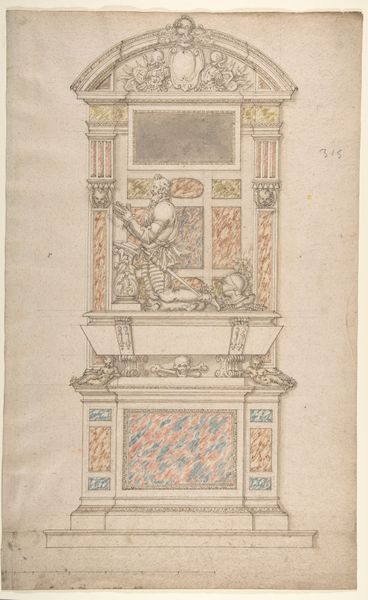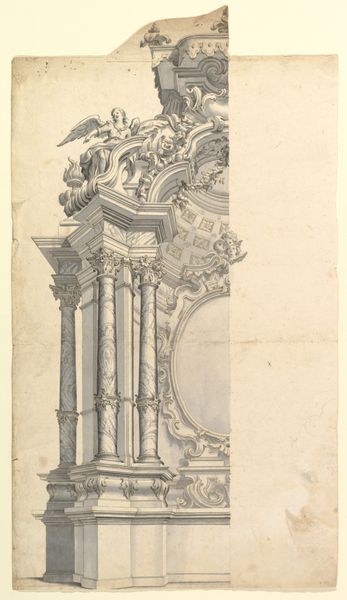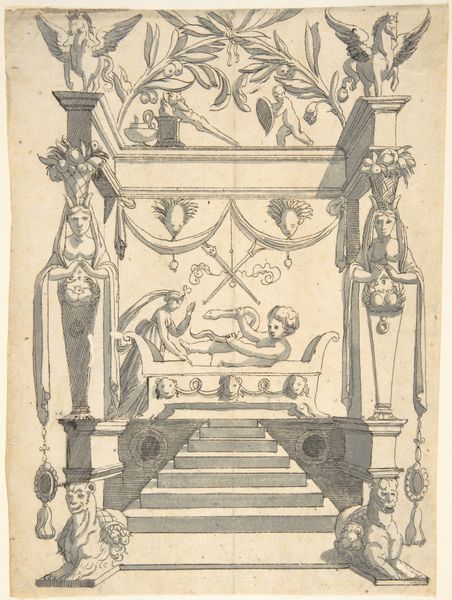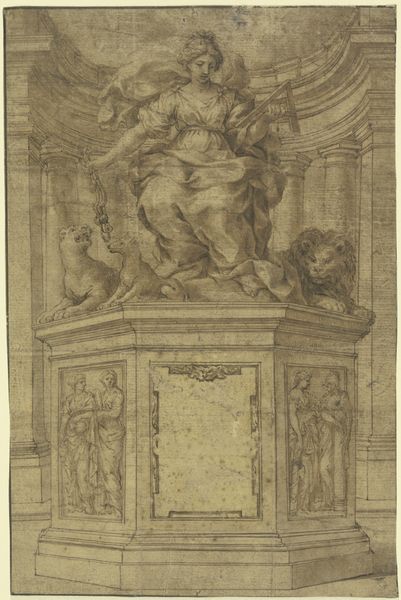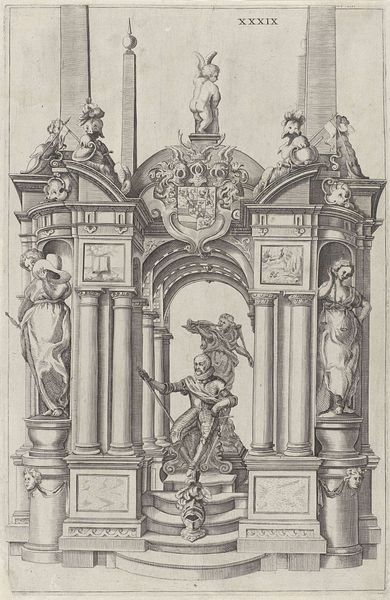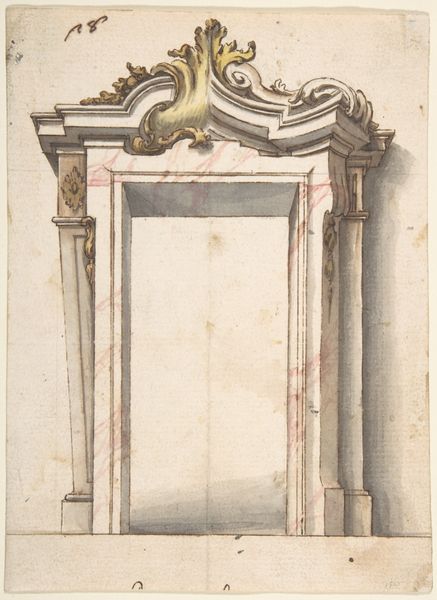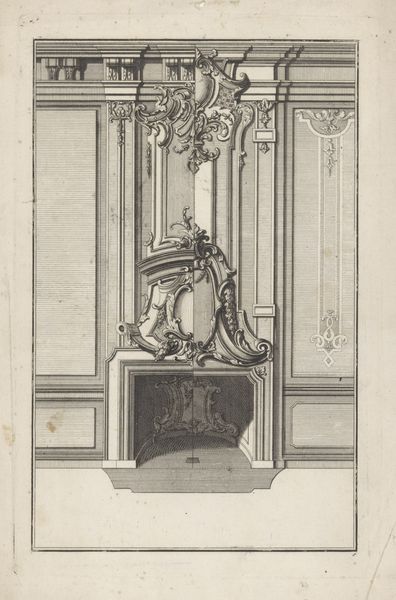
drawing, print, paper, ink, architecture
#
drawing
#
toned paper
#
baroque
# print
#
etching
#
paper
#
ink
#
architecture
Dimensions: sheet: 11 3/4 x 6 7/16 in. (29.9 x 16.3 cm)
Copyright: Public Domain
Editor: This is an intriguing design, simply called "Design for an Altar with a Variant." It's an anonymous piece, dated around 1700-1800, and from what I understand, combines drawing and printmaking techniques like etching and ink on toned paper. I'm struck by the contrasting levels of detail, how parts of it are so carefully rendered and others barely sketched in. What catches your eye in this piece? Curator: It's fascinating to consider the materiality of this work. Paper wasn’t just a passive surface; it was a commodity, produced through specific labor processes. Toned paper adds another layer, suggesting intentionality in the design's presentation, perhaps aiming to mimic the appearance of aged stone or marble used in actual altar construction. Editor: So, the paper itself is a statement about the envisioned materials of the altar? Curator: Precisely. The etching process too—consider the labour involved in creating the matrix, the specific skills of the artisan, the socio-economic status this work suggests in the individual and workshops involved. The design depicts both a proposed final product and an indication of the labor needed to execute it, while challenging traditional categories like "high art" versus "craft." Where would this altar likely exist in a cathedral? Would it serve any type of constituency differently? Editor: That's a great point. Given the angels and general aesthetic, the construction materials – marble versus cheaper alternative – would dramatically affect its accessibility to different social classes. It shifts the focus from pure religious function to its role within the wider social fabric. Curator: Exactly. Examining the production, materials and intended site allows us to see this work not just as a design, but as a reflection of Baroque era society. The raw materials speak to their sources and consumption, what can be gained from such altar. Editor: I hadn't considered the socioeconomic aspect embedded in the materials themselves. Thanks, that has truly opened up new avenues of interpretation. Curator: And I had not reflected fully on its purpose. A fruitful exchange!
Comments
No comments
Be the first to comment and join the conversation on the ultimate creative platform.
